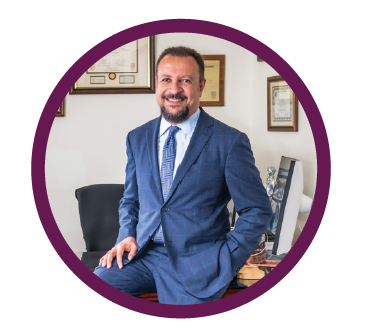Focus On With Dr. Sadek: RNS Therapy For Epilepsy
Responsive Neurostimulation (RNS) Therapy for Epilepsy: An Alternative to Traditional “Brain Surgery” for Refractory Epilepsy
Despite use of anti-seizure medication, at least one- third of people with epilepsy continue to fail to get control of their seizures. For these individuals alternative treatments such as surgery and medical devices should be considered. The RNS (responsive neurostimulation) system is a surgical treatment that can help treat seizures. This is a surgical procedure that does not involve removal of any brain tissue but rather a neurosurgeon places an implanted device inside the brain. The device consists of a battery- powered device called a neurostimulator that is placed just beneath the surface of the skull and is not visible from the outside. The device is then connected to small thin wires that are placed in the region of the brain where the seizures originate. Once a seizure is detected by the stimulator, a small amount of electrical stimulation is delivered through the wires that helps to stop the seizure before it begins. The amount of stimulation is small and is not felt by the patient. Since no brain tissue is removed, there is less risk than conventional resective surgery, and the procedure can be reversed by removing the device. Recovery is often minimal with most patients returning home the following day.
This device may be a good option for patients who have seizures coming from an area of the brain that may be too risky to remove, such as the speech or movement centers. The device also serves as a remote monitor where the patient will have the ability to download information from their device, and their physician can remotely monitor data about their seizures and individually tailor settings for more optimal control. This can provide a great way to more accurately track seizures including factors such as common triggers and response to certain medications.
Although not a cure for epilepsy, the device can be helpful in decreasing the frequency of seizures with a majority of patients experiencing a reduction of their seizure by one- half. The device can take time to work,; with most patients seeing continued improvement with more long-term use of the device. Some patients even achieved 6six- month periods of seizure freedom from seizures with the device. Most patients continue to take medication for their seizures, but the device can be useful in assessing which medications may be most effective. Surgical treatment and medical devices such as the RNS system should be considered for any individual who continues to suffer from frequent and disabling seizures despite trial of two antiseizure medications. Before implanting the device, detailed testing must be done in order to accurately determine where the seizures are originating from inside the brain. Consider meeting with an epilepsy specialist to discuss RNS therapy further.
Dr. Ahmed Sadek | Orlando Epilepsy Center, Inc.
Dr. Sadek is the Director of Orlando Epilepsy Center. He is an Assistant Professor of Neurology at the University of Central Florida College of Medicine and a Clinical Assistant Professor of Neurology at the University of Florida Shands, Gainesville. Dr. Sadek is triple Board certified in Neurology, Clinical Neurophysiology, and Epilepsy.
CONTACT INFORMATION
Phone: 407.704.8510
Website: orlando-epilepsy.com





